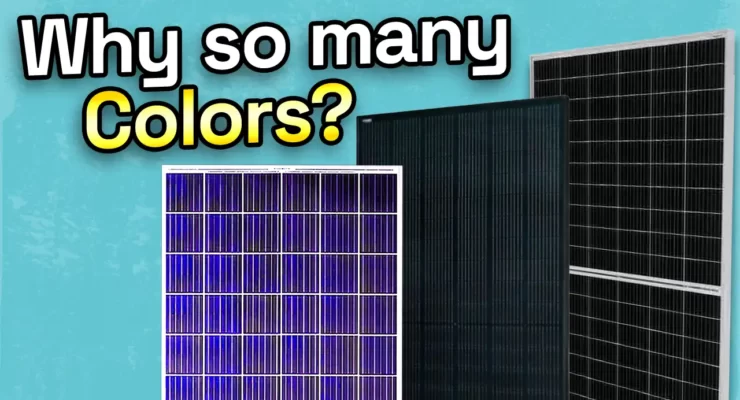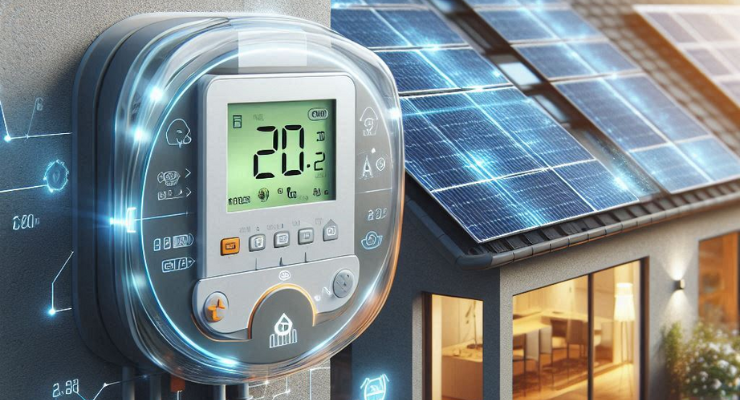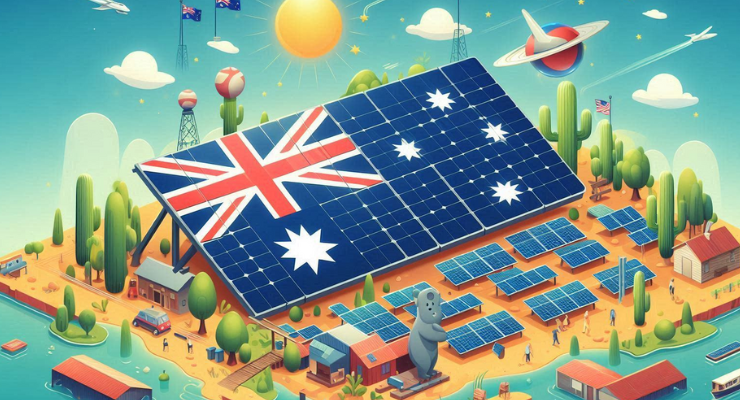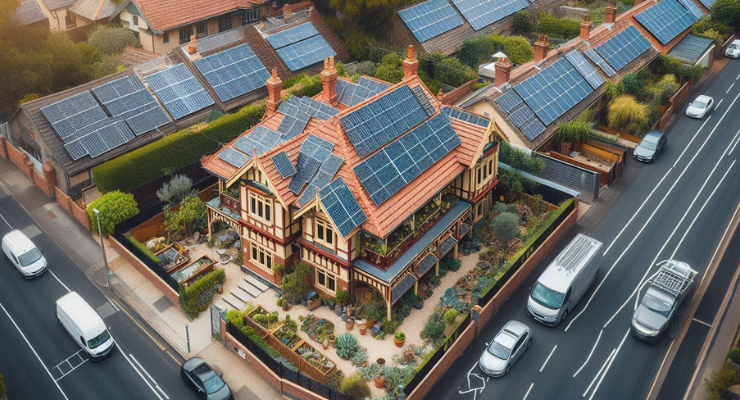Fast read
Solar panels can have different colours, mainly blue or black, depending on the materials used in their manufacturing process. Blue-coloured solar panels are often composed of polycrystalline cells, which have a speckled appearance because of impurities and reflect a blue hue when exposed to sunlight.
In contrast, black-coloured solar panels use monocrystalline cells made of higher-purity silicon, resulting in a uniform black appearance under sunlight. The development of multicoloured solar panels aims to blend them seamlessly into architectural designs and constructions.
However, the main consideration when choosing solar panels should still be their efficiency, performance, and reliability. While black frames and back sheets may improve aesthetics, they could slightly reduce panel efficiency. Despite the possibility of more colours being available in the future, the additional cost because of lower production runs makes widespread use of coloured panels not that likely
Why are there Black vs Blue solar panels?
In the realm of solar panels, there is a distinction between those featuring blue cells vs black cells, a comparison that holds significance globally, including in Australia. Usually, solar panels have blue cells, giving them a blue tint because of the coatings on their silicon wafers. But now, there are panels with black cells, which look sleeker and might work better because they soak up more sunlight.
This comparison isn’t just about looks—it also affects how much solar energy they produce and where they work best. Understanding these differences helps people choose the right solar panels for their needs.
How are there different colours?
The fundamental reason for the various colours of solar panels is the variety of materials used in their manufacture. Most solar panels on the market are composed of crystalline silicon with a blue hue. The physical features of silicon cause the blue colour and how it absorbs and reflects different wavelengths of light.
Polycrystalline cell-based solar modules were popular until around 2018. Silicon cells were cheaper to manufacture by pouring molten silicon into moulds. This process creates impurities or a speckled appearance of crystals within the wafer. When treated with an anti-reflective coating, the crystals look blue when exposed to sunlight.
Monocrystalline solar cells use silicon of higher purity and offer a more uniform appearance. Because of the higher purity level, once the silicon cells have the anti-reflective coating applied, they appear close to black under sunlight. The better the quality of the silicon within the cell, the blacker the solar cell will appear.
What’s the reason for black vs blue solar panels?
One of the driving motivations behind the development of multicoloured solar panels would be to incorporate renewable energy systems more seamlessly into architectural designs and constructions. The traditional blue vs black solar panels can be regarded as visually unappealing, not complementing the aesthetics of particular buildings. The argument could be that making solar panels in different colours would allow them to appeal to a broader market.
Creating multi-coloured solar panels is a continuous research and innovation topic. As solar technology progresses, it is reasonable to anticipate the availability of panels in a wider range of colours. The demand for personalisation, aesthetics, and integration of solar panels into various architectural types drives these improvements.
Longi recently released a series called Hi-Mo 6 Artist which seems to be available in a number of colours. In marketing, Longi the manufacturer offers these panels for special buildings such as entertainment venues, feature walls, sports stadiums and iconic venues, where appearance is a crucial consideration. So far, it is not known if such solar panels will cost just a little more or significantly more than other Longi solar panels using the same technology.
It should be noted, however, that the colour of a solar panel should not be the main reason for selection. The panel’s higher efficiency, performance, and dependability are still critical considerations. While colour personalisation is an exciting advance, it should not be at the expense of the solar panel’s core goal – to generate electricity effectively and sustainably.
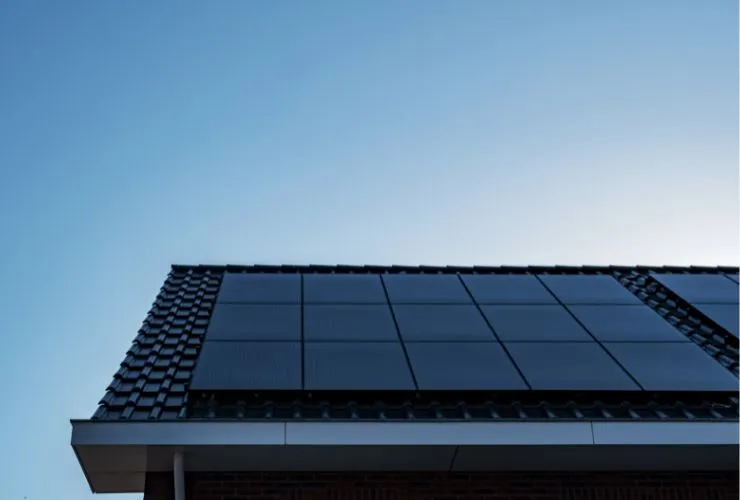
What about the backing sheet and frames?
Manufacturers are increasingly producing solar panels with black frames instead of natural aluminium frames for residential use. This shift is driven by a growing emphasis on the appearance of the system on the roof. Solar panels with black frames, along with black brackets, clamps, and rails, tend to have a sleeker and more appealing look.
Monocrystalline solar panels are manufactured with either white or black back sheets. The black back sheet gives the solar panel a uniform black appearance rather than seeing the white background or lines of the standard white back sheet on solar panels.
While the solar panel with the black back sheet may look more uniform and aesthetically pleasing, it reduces the solar panels’ energy efficiency slightly because the white back sheet reflects some sunlight into the cell to create more power. In contrast, the black back sheet does not reflect light, but then again, one might choose a minimal drop in power output.
So will there be more colours available in the future?
Solar panels in various colours make sense, and as Longi has just shown are technically feasible. They are becoming an option to blend into roofing surfaces and architectural features. While solar panels could be made with a range of coloured back sheets and even potentially colours in the cells, the cost of doing so is relatively high because of the likely lower production run for the coloured panels. As everyone knows, higher production numbers mean lower costs.
As such, it would effectively be a custom option and not brought into Australia as a standard option. Using dyes and coatings to colour the panels increases costs compared to black cell panels. Therefore, the additional cost reduces the likelihood of solar panels in various colours becoming a sales hit. Except for specific iconic projects where the panels’ colours could even become a feature of the building.
In conclusion
The discussion about blue vs. black solar panels looks at how they look and work differently. Usually, solar panels are blue because of what they’re made of. But now, some have black cells, which can look nicer and might work better.
People are also thinking about making solar panels in other colours to match buildings better. Even though different colours are cool, it’s important to remember that how well the panel works is the most important thing.
While black frames and back sheets are becoming popular, making solar panels in different colours might cost more.
